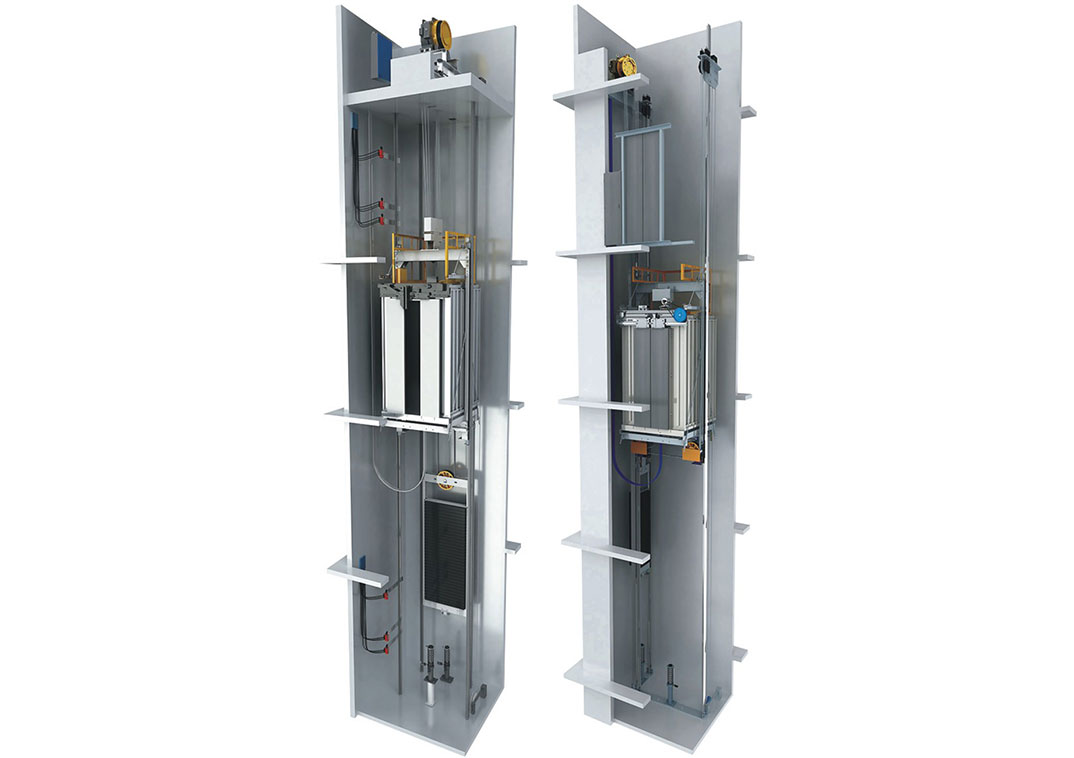Passenger elevators are an indispensable part of modern buildings. Their load capacity and running speed directly affect the overall design, functional layout and user experience of the building. During the building design stage, reasonable planning of the load capacity and speed of the elevator is not only the key to meeting the usage needs, but also an important factor to ensure the efficient operation of the building. The following is a detailed analysis:
The impact of load capacity on building planning
(1) Requirements for building types and usage scenarios
Different types of buildings have significantly different requirements for elevator load capacity. For example:
Residential buildings: Usually equipped with elevators with smaller load capacities (such as 630kg or 800kg) because the number of people transported at a time is small.
Office buildings: A larger load capacity (such as 1000kg or 1350kg) is required to cope with the situation where a large number of employees go to and from get off work during peak hours.
Shopping malls or hotels: These places may require elevators with extra-large load capacities (such as more than 2000kg) to transport goods or accommodate more passengers.
(2) Space occupancy and structural design
Elevators with larger load capacities require thicker wire ropes, larger traction machines and stronger cars, which will increase the size of the elevator shaft. Therefore, sufficient space must be reserved to accommodate these devices at the beginning of building design.
At the same time, the load-bearing capacity of the elevator will also affect the basic design and structural strength of the building. In particular, for high-rise buildings, it is necessary to ensure that the foundation can withstand the additional load generated by the elevator and its operation.
(3) Traffic flow and efficiency
The load capacity directly determines the number of passengers transported each time. If the load capacity is insufficient, it may lead to serious queuing during peak hours and reduce user experience. Therefore, when planning, it is necessary to select the appropriate elevator configuration based on the purpose of the building and the expected flow of people.

The impact of operating speed on building planning
(1) The relationship between building height and elevator speed
For low-rise buildings (such as 5-10 floors), the elevator speed is generally 1-2 meters per second to meet the demand.
For high-rise buildings (such as more than 20 floors), the elevator speed needs to be increased to 4-6 meters per second or even higher to reduce passenger waiting time and riding time.
Super high-rise buildings (such as more than 100 floors) may require high-speed elevators (such as more than 10 meters per second) and adopt technologies such as partitioned operation or double-deck cars.
(2) Vertical traffic efficiency
The speed of an elevator not only affects the time of a single trip, but also the vertical traffic efficiency of the entire building. If the speed is too slow, it may cause elevator congestion during peak hours, thus affecting the functionality of the entire building.
In super-high-rise buildings, multiple groups of elevators with different speeds are usually set up to form a zoned service system (such as low-zone, middle-zone and high-zone elevators) to optimize traffic flow.
(3) Equipment cost and maintenance
High-speed elevators require more advanced technology and more complex control systems, which will significantly increase equipment costs and subsequent maintenance costs. Therefore, it is necessary to weigh speed requirements and economic feasibility during planning.
Comprehensive consideration: balance between load capacity and speed
(1) Peak-hour transportation capacity requirements
Architects and engineers need to comprehensively consider load capacity and speed when designing elevator systems to ensure that people can be evacuated quickly during peak hours. For example, pressure can be relieved by increasing the number of elevators or configuring elevators with larger load capacities.
(2) User experience and comfort
The choice of load capacity and speed must also take into account passenger comfort. Too fast a speed may cause vibration or noise problems, while too small a load capacity may make passengers feel crowded. Therefore, reasonable parameter setting is crucial.
(3) Energy saving and environmental protection
While pursuing high efficiency, energy consumption of elevators must also be considered. Although high-speed and large-load elevators improve efficiency, they also increase energy consumption. Therefore, energy-saving elevator technology (such as permanent magnet synchronous motors) can be used to balance performance and environmental protection needs.
The load capacity and speed of passenger elevators are important parameters that cannot be ignored in building planning. They not only affect the spatial layout, structural design and cost budget of the building, but also directly determine the building's efficiency and user experience. In actual planning, architects and engineers need to combine factors such as building type, passenger flow forecast, budget constraints, etc. to scientifically and reasonably select the load capacity and speed of the elevator to achieve the best balance between functionality and economy.











